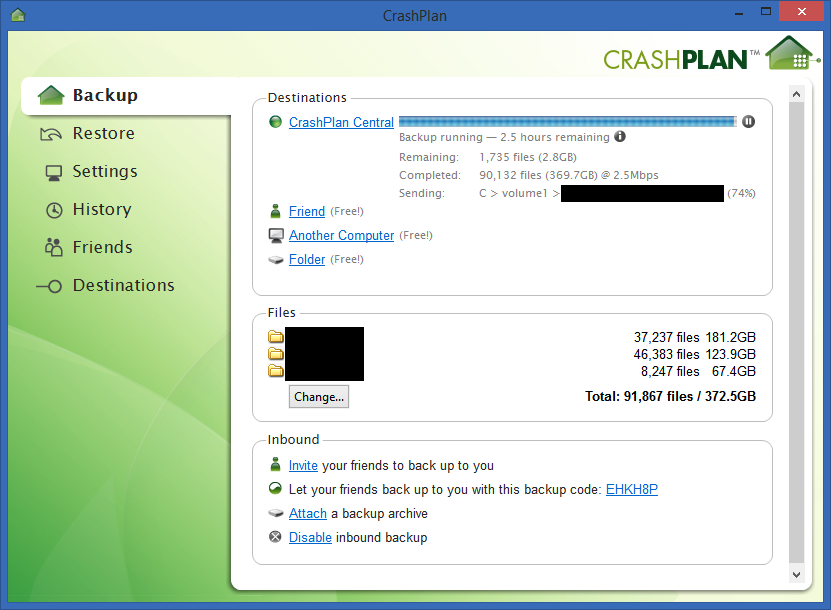
- CRASHPLAN UNRAID SETUP LICENSE KEY
- CRASHPLAN UNRAID SETUP INSTALL
- CRASHPLAN UNRAID SETUP FULL
- CRASHPLAN UNRAID SETUP REGISTRATION
- CRASHPLAN UNRAID SETUP PC
Unraid 6 defaults to using the XFS filesystem for all devices, but if you define a cache pool then BTRFS will automatically be used for those devices (you can change the default file system under Settings->System Settings->Disk Settings). New devices added to disk or cache device slots will appear as 'Unformatted' and will be unusable for storing files until you format them. This will mount your devices and start the array. Once you have all your devices assigned, you can click the Start button under Array Operation. Starting the Array and Formatting Your Devices

CRASHPLAN UNRAID SETUP LICENSE KEY
NOTE: Your array will not start if you have attached more storage devices than your license key allows. Use SSDs in a pool for the ultimate combination of functionality, performance, and protection. Apps and VMs benefit from SSDs as they can leverage their raw IO potential to perform faster when interacting with them. SSD-based pools are ideal for applications and virtual machines.Cache pools can be expanded on demand, similar to the array. To ensure data remains protected at all times (both on data and cache disks), you must assign more than one device to the pool, creating what is typically called a cache-pool. If you only assign one device to the cache pool, data residing there before being moved to the array on a schedule is not protected from data loss. Creating a multi-device pool adds protection for cached data.You control at the User Share level which shares should use a pool for cache purposes and which pool that should be. Data written to a cache pool is still presented through your user shares, making use of this function completely transparent. It does this by redirecting write operations to a dedicated disk (or pool of disks in Unraid 6) and moves that data to the array on a schedule that you define (by default, once per day at 3:40AM). Using a pool as a cache will improve array performance.This does NOT apply to the cache / cache pool. Using SSDs as data/parity devices may have unexpected/undesirable results. Some SSDs may not be ideal for use in the array due to how TRIM/Discard may be implemented. SSD support in the array is experimental.If assigning dual parity disks, your two parity disks can vary in size, but the same rule holds true that no data disk in the array can be larger than your smallest parity device. For this reason, it is highly recommended to purchase the largest HDD available for use as your initial parity device, so future expansions aren’t limited to small device sizes. When expanding your array in the future (adding more devices to data disk slots), you cannot assign a data disk that is larger than your parity device(s). Always pick the largest storage device available to act as your parity device(s).

Click on the Main tab from the Unraid webGui and follow these guidelines when assigning disks:
CRASHPLAN UNRAID SETUP REGISTRATION
Once you are connected to the webGui, you will immediately be prompted to set a strong root password (as of version 6.10):Īfter installing a registration key, you are ready to begin assigning devices for Unraid to manage.
CRASHPLAN UNRAID SETUP PC
Open a web browser from your Mac or PC and navigate to Note: if you configured a different host name in the USB Flash Creator, use that name instead of tower.Boot Unraid in GUI mode and login (username is root, no password by default) or.There are two methods to connect to the webGui in Unraid: Once Unraid OS has booted, you can now bring up the browser-based Management Utility, a.k.a., the webGui, and complete the process of configuring your system. Save your BIOS configuration changes and exit to boot Unraid OS.Enable virtualization-specific features (including IOMMU).

CRASHPLAN UNRAID SETUP INSTALL
CRASHPLAN UNRAID SETUP FULL


 0 kommentar(er)
0 kommentar(er)
